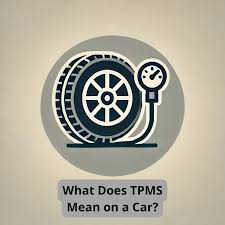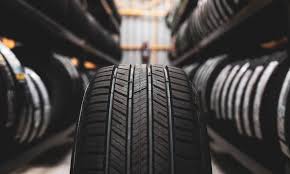Blog
Common TPMS Myths Debunked
Common TPMS Myths Debunked
The Tire Pressure Monitoring System (TPMS) is an essential feature in modern vehicles, ensuring tire safety and enhancing driving performance. Despite its widespread adoption, several myths about TPMS persist, leading to misconceptions among drivers. Let’s debunk some of the most common myths and separate fact from fiction.
Myth 1: TPMS Eliminates the Need to Manually Check Tire Pressure
Fact: While TPMS provides alerts for low tire pressure, it doesn’t replace regular manual checks.
Why?
- TPMS is designed to alert drivers only when the tire pressure drops significantly, usually around 25% below the recommended level.
- Minor pressure variations, which can still impact fuel efficiency and tire wear, may not trigger the TPMS warning light.
What to Do:
Check your tire pressure manually at least once a month and before long trips, using a reliable tire pressure gauge.
Myth 2: All TPMS Systems Are the Same
Fact: There are two main types of TPMS systems: direct and indirect, each with different technologies and features.
Differences:
- Direct TPMS: Measures actual tire pressure using sensors inside each tire. It provides precise readings but requires more maintenance.
- Indirect TPMS: Uses the vehicle’s ABS and wheel speed sensors to estimate tire pressure by comparing rotational speeds. It’s cost-effective but less accurate.
Understanding which type your car uses can help you maintain it properly and avoid unexpected issues.

Myth 3: The TPMS Warning Light Is Always Accurate
Fact: While TPMS is reliable, it’s not infallible.
Possible Issues:
- Sensor Malfunctions: Sensors can fail or transmit incorrect data if they’re damaged or the battery is dead.
- Environmental Factors: Extreme temperatures can temporarily affect pressure readings and trigger false alarms.
- Calibration Errors: If tires are replaced or rotated without recalibrating the system, the TPMS light may activate incorrectly.
What to Do:
If the TPMS warning light stays on after inflating your tires, have the system inspected by a professional mechanic.
Myth 4: TPMS Sensors Never Need Maintenance
Fact: TPMS sensors require regular maintenance and eventual replacement.
Why?
- Sensors have built-in batteries that typically last 5–10 years. When the battery dies, the entire sensor often needs to be replaced.
- Corrosion or damage to the valve stem, which houses the sensor, can affect its functionality.
What to Do:
Include TPMS sensors in your routine vehicle maintenance schedule, and replace them when necessary.
Myth 5: TPMS Doesn’t Work with Aftermarket Tires
Fact: TPMS can work with aftermarket tires, but compatibility may vary.
Considerations:
- Sensor Transfer: If switching to new tires, the TPMS sensors can often be transferred to the new set.
- Programming Needs: Some aftermarket tires require reprogramming or recalibration of the TPMS.
- Specialized Tires: If using custom or oversized tires, consult a professional to ensure proper integration with the TPMS.
What to Do:
Discuss your TPMS system with your tire technician when purchasing aftermarket tires to avoid complications.
Myth 6: You Can Ignore the TPMS Warning Light if Your Tires Look Fine
Fact: The TPMS light often indicates a serious issue, even if the tires appear fine visually.
Hidden Risks:
- Slight underinflation can affect fuel efficiency and tire lifespan without being noticeable.
- Slow leaks may not be immediately visible but can lead to dangerous blowouts over time.
What to Do:
Never ignore the TPMS warning light. Inspect your tires and check their pressure as soon as possible.
Myth 7: TPMS Increases Maintenance Costs Significantly
Fact: While TPMS does add some costs, the benefits far outweigh the expenses.
Benefits That Offset Costs:
- Improved fuel efficiency saves money at the pump.
- Extended tire lifespan reduces replacement frequency.
- Enhanced safety minimizes the risk of costly accidents.
What to Do:
View TPMS maintenance as an investment in safety and cost-efficiency rather than an unnecessary expense.

Myth 8: TPMS Is Only for Passenger Cars
Fact: TPMS is used in various vehicle types, including trucks, SUVs, and motorcycles.
Applications:
- Heavy-duty trucks and RVs often use advanced TPMS systems to monitor multiple tires.
- Some motorcycle manufacturers are incorporating TPMS to improve rider safety.
What to Do:
If you own a vehicle other than a passenger car, explore TPMS options suited to your specific needs.
Myth 9: TPMS Protects Against All Tire-Related Problems
Fact: TPMS primarily monitors pressure and doesn’t address other tire issues.
Limitations:
- It cannot detect uneven wear, alignment issues, or punctures unless they cause a significant pressure drop.
- Regular tire inspections are still crucial for detecting non-pressure-related problems.
What to Do:
Combine TPMS monitoring with routine tire maintenance for comprehensive care.
Conclusion
TPMS is a valuable tool for maintaining tire health and ensuring road safety, but understanding its capabilities and limitations is crucial. By debunking these common myths, you can make the most of your TPMS system and drive with greater confidence.
For more automotive insights and tips, visit RegalXmuse.com.


